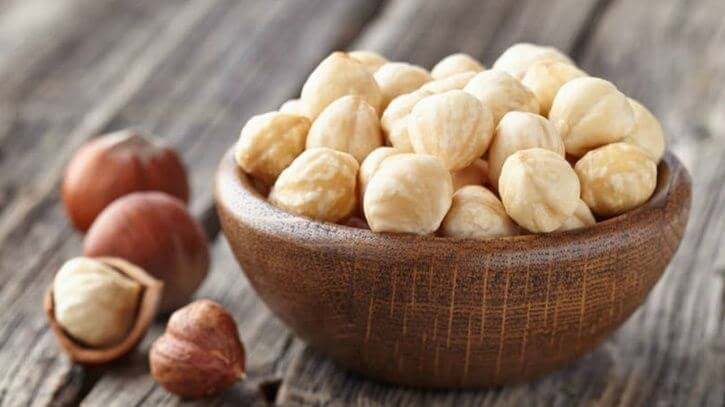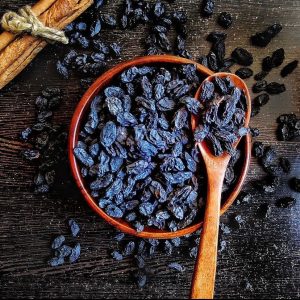
Hazelnuts
₹568.00 – ₹979.00 N/A
Hazel Nuts
What is Hazelnut? Hazelnuts are the edible seeds of the hazel tree (Corylus avellana). They have a round, brown shell and are known for their rich, slightly sweet flavor. They can be eaten raw, roasted, or used in a variety of culinary applications, including desserts, spreads (like Nutella), and even savory dishes.
How to Select Hazelnuts
Choose hazelnuts that are firm and heavy for their size.
The shell should be intact and free from cracks or holes.
If buying shelled hazelnuts, look for plump, smooth nuts without wrinkles or mold.
Fresh hazelnuts should have a sweet, nutty aroma. If they smell rancid, avoid them.
Benefits
Nutritional: Rich in healthy fats, proteins, vitamins (E, B6), minerals (magnesium, copper), and antioxidants.
Heart Health: The high levels of monounsaturated fats and antioxidants can help reduce inflammation and support heart health.
Brain Health: Vitamin E and antioxidants promote brain function and may protect against cognitive decline.
Weight Management: Hazelnuts are satiating due to their fiber and fat content, which helps control hunger.
Skin Health: Vitamin E in hazelnuts can contribute to healthy skin by preventing oxidative damage.
Packaging Sizes Available Hazelnuts come in various packaging sizes:
Hazelnut spreads: 250g, 500g packs.
Use
Culinary: Used in desserts (cakes, cookies, pralines), chocolate spreads, and savory dishes. Also used in granolas, salads, or as snacks.
Oil: Hazelnut oil is used for cooking and in salad dressings.
Skincare: Hazelnut oil is used in cosmetics for its nourishing and hydrating properties.
Health Benefits by Age Group
Men: Supports heart health, muscle function, and helps maintain healthy testosterone levels due to magnesium and healthy fats.
Women: Promotes skin health, balances hormones, and supports bone health with its calcium and magnesium.
Kids: Provides healthy fats for brain development and energy.
Elderly: Rich in antioxidants and healthy fats, it supports cognitive function, heart health, and may reduce the risk of age-related diseases.
Taste Hazelnuts have a sweet, slightly buttery, and earthy flavor. When roasted, their flavor deepens, becoming richer and more aromatic.
How to Consume
Raw or roasted as a snack.
Added to baked goods like cakes, cookies, and muffins.
Used in granolas, salads, or as a topping for yogurt.
Blended into smoothies or nut butters.
Ground and used in cooking or as a gluten-free flour substitute.
How to Store
Shelled: Store in a cool, dry place in an airtight container. Refrigeration can extend shelf life.
Unshelled: Can be stored at room temperature in a cool, dry place. Lasts longer when kept away from direct sunlight and moisture.
Freezing: Shelled hazelnuts can be frozen for up to a year to preserve freshness.
Product Life
Shelled hazelnuts: Last about 4-6 months at room temperature, up to a year in the refrigerator, and more than a year in the freezer.
Unshelled hazelnuts: Can last for up to a year in a cool, dry place.
Harvesting Time
Hazelnuts are typically harvested in late summer to early autumn (August to October). They fall from the tree when they are ripe, and then they are collected from the ground or by shaking the tree.
After harvesting, hazelnuts are dried to reduce moisture content and prevent spoilage. Once dried, they can be stored for long periods before being processed or sold.
After the drying process, hazelnuts may undergo shelling, roasting, or other processing depending on the product type (whole, chopped, or ground).
Related products
- 1000 GRMFrom: ₹624.00
- 500 GFrom: ₹339.00
Black Raisins
- 1000 GRMFrom: ₹1,456.00
- 250 GFrom: ₹444.00
- 500 GFrom: ₹738.00
Cashew (Kaju)
- 1000 GRMFrom: ₹1,024.00
- 500 GFrom: ₹545.00
Mixed Dry Fruits
- 1000 GRMFrom: ₹910.00
- 500 GFrom: ₹522.00
Dried Pineapple
- 250 GFrom: ₹579.00
- 500 GFrom: ₹979.00
Brazil Nuts
- 1000 GRMFrom: ₹1,287.00
- 500 GFrom: ₹671.00
Walnut Kernels
- 100 GFrom: ₹551.00
- 1000 GRMFrom: ₹3,973.00
- 250 GFrom: ₹1,086.00
- 500 GFrom: ₹1,997.00
Green Ealichi
₹624.00 N/A


₹303.00 N/A








Reviews
There are no reviews yet.